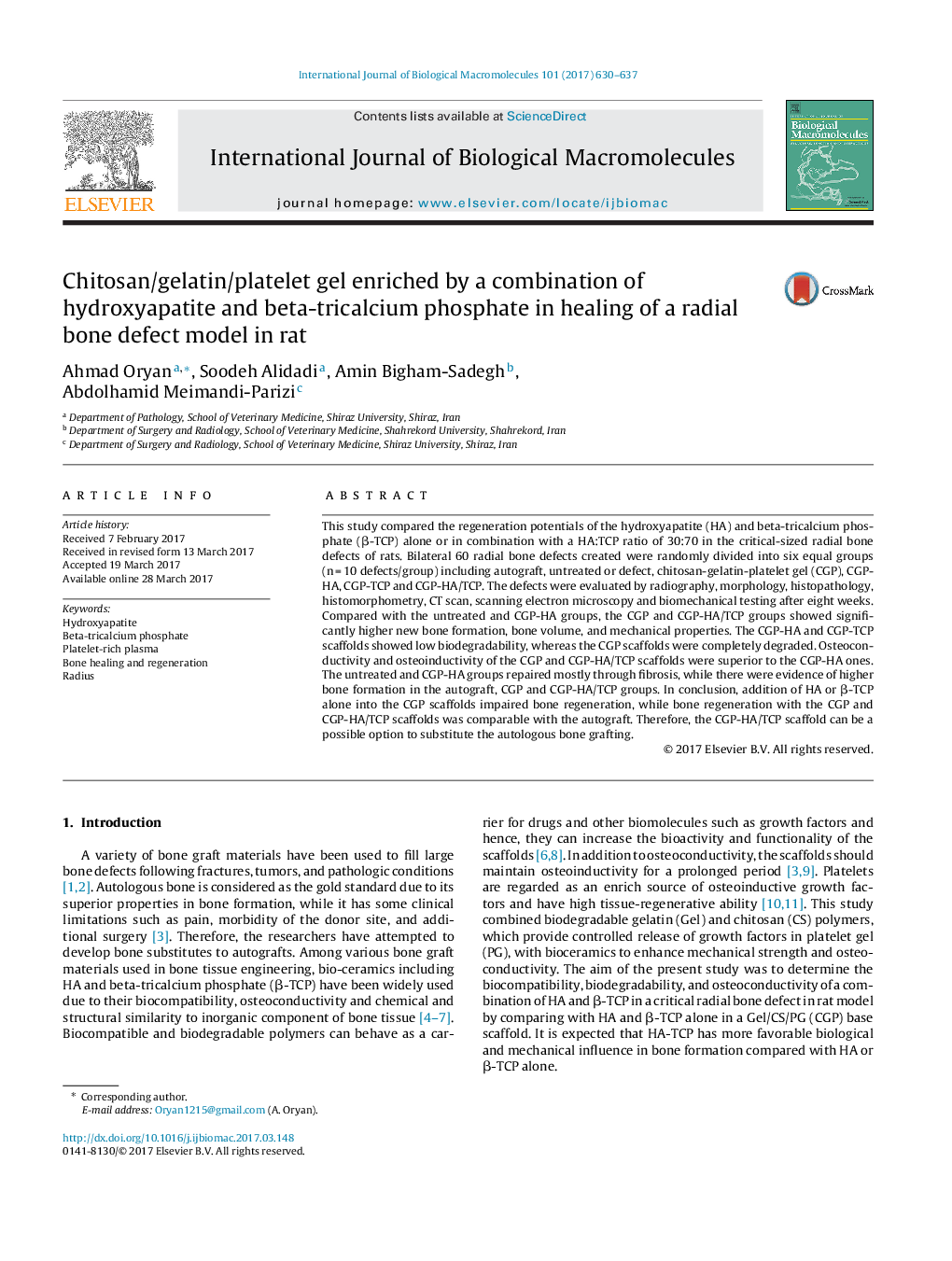| Article ID | Journal | Published Year | Pages | File Type |
|---|---|---|---|---|
| 5511992 | International Journal of Biological Macromolecules | 2017 | 8 Pages |
Abstract
This study compared the regeneration potentials of the hydroxyapatite (HA) and beta-tricalcium phosphate (β-TCP) alone or in combination with a HA:TCP ratio of 30:70 in the critical-sized radial bone defects of rats. Bilateral 60 radial bone defects created were randomly divided into six equal groups (n = 10 defects/group) including autograft, untreated or defect, chitosan-gelatin-platelet gel (CGP), CGP-HA, CGP-TCP and CGP-HA/TCP. The defects were evaluated by radiography, morphology, histopathology, histomorphometry, CT scan, scanning electron microscopy and biomechanical testing after eight weeks. Compared with the untreated and CGP-HA groups, the CGP and CGP-HA/TCP groups showed significantly higher new bone formation, bone volume, and mechanical properties. The CGP-HA and CGP-TCP scaffolds showed low biodegradability, whereas the CGP scaffolds were completely degraded. Osteoconductivity and osteoinductivity of the CGP and CGP-HA/TCP scaffolds were superior to the CGP-HA ones. The untreated and CGP-HA groups repaired mostly through fibrosis, while there were evidence of higher bone formation in the autograft, CGP and CGP-HA/TCP groups. In conclusion, addition of HA or β-TCP alone into the CGP scaffolds impaired bone regeneration, while bone regeneration with the CGP and CGP-HA/TCP scaffolds was comparable with the autograft. Therefore, the CGP-HA/TCP scaffold can be a possible option to substitute the autologous bone grafting.
Related Topics
Life Sciences
Biochemistry, Genetics and Molecular Biology
Biochemistry
Authors
Ahmad Oryan, Soodeh Alidadi, Amin Bigham-Sadegh, Abdolhamid Meimandi-Parizi,
